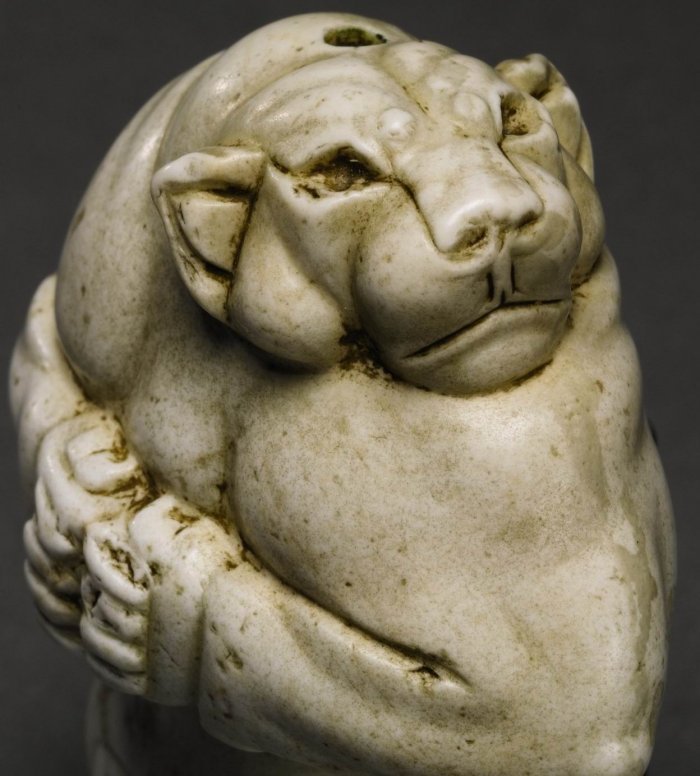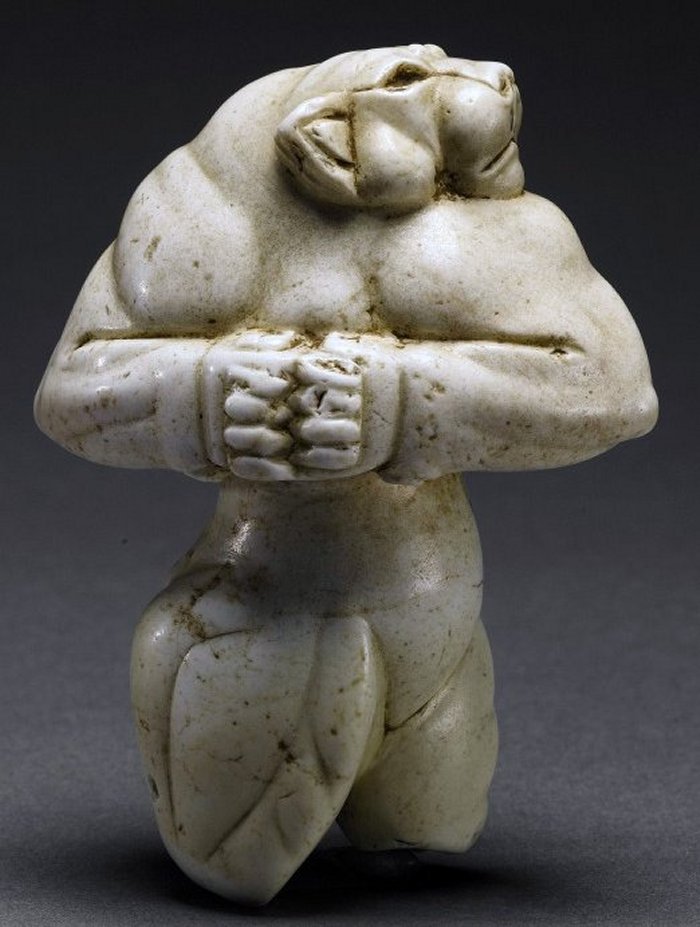Amazing ‘Guennol Lioness’ – One Of The Greatest Ancient Works Of Art Of All Time
A. Sutherland - AncientPages.com - This amazing lioness-woman sculpture is considered one of the oldest artifacts of Mesopotamia. The so-called 'Guennol Lioness' is believed to have been created circa 3000-2800 BC by a skilled Elamite artist.
The Elamites and their kingdom Elan were the ancient Pre-Iranian Civilization that lasted from about 2700 to 550 and occupied the present-day province of Khuzestan, in southwestern Iran. Susa was Elam’s capital and the Elamite cultural identity dates back to the foundation of Susa around 4000 BC.
A tiny limestone figurine - once part of Alastair and Edith Martin's Guennol Collection - is 8.3cm (3.25in) tall and is one of many, similar anthropomorphic carvings depicting ancient Near East deities.
The ancient anthropomorphic carving - a wonderful combination of animal and human features - was discovered at a site near Baghdad, at approximately 3000 BC.
The sculptor of this masterwork is - unknown.
At that time, the Mesopotamians already invented the wheel, developed writing, and created the world's first cities with gigantic architecture.
The ancient anthropomorphic carving - merging animal and human features - was discovered at a site near Baghdad, at approximately 3000 BC. Credits: Sotheby's New York
A tiny limestone figurine, which was once part of Alastair and Edith Martin's Guennol Collection, is 8.3cm (3.25in) tall and is one of many, similar anthropomorphic carvings depicting ancient Near East deities.
The ' Guennol Lioness' represents the Mesopotamian belief in attaining power over the physical world by combining the superior physical attributes of various strong and powerful species.
The figurine is a "brilliant combination of animal form and human pose", as it was described by many experts.
The 'Guennol Lioness' was sold at auction for $57m (£28m) (!), almost double the previous record price for a sculpture.
On December 5, 2007, the beautiful piece of art was sold to an anonymous British bidder for $57m (£28m) (!), almost double the previous record price for a sculpture setting a world record (this record has since been broken) for antiquity sold through an auction house.
The purchaser of the 'Guennol Lioness' was anonymous. Today, nobody knows the artifact's location and thus, this priceless historical item is not available to the public.
The statuette was owned by a private collector named Martin Family (Guennol, pronounced GWEN-ol, is Welsh for Martin), who loaned the item on trust to Brooklyn Museum, where the item was on view for nearly 60 years. The piece was acquired by Alastair Bradley Martin and his wife Edith in 1948 from Joseph Brummer, the New York art dealer and collector, who had allegedly come to possess the figure in 1931.
The Guennol Lioness is a very beautiful and certainly very unique piece of art created by the Elamite people who left in legacy a wide variety of works of art.
Written by – A. Sutherland AncientPages.com Staff Writer
Copyright © AncientPages.com All rights reserved. This material may not be published, broadcast, rewritten or redistributed in whole or part without the express written permission of AncientPages.com
Expand for referencesMore From Ancient Pages
-
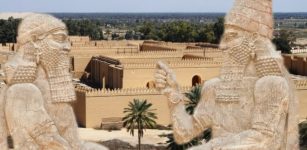 Mysterious Death Of Cambyses II – Natural, Suicide Or Assassination By Darius I The Great?
Featured Stories | Apr 21, 2021
Mysterious Death Of Cambyses II – Natural, Suicide Or Assassination By Darius I The Great?
Featured Stories | Apr 21, 2021 -
 DNA Reveals – One Of Sunken Warship Vasa’s Crewmen Was A Woman
Archaeology | Apr 4, 2023
DNA Reveals – One Of Sunken Warship Vasa’s Crewmen Was A Woman
Archaeology | Apr 4, 2023 -
 Birka: Major Trading Center During The Viking Age
Featured Stories | Feb 12, 2018
Birka: Major Trading Center During The Viking Age
Featured Stories | Feb 12, 2018 -
 Okanagan Indians’ Fascinating Myth Of A Lost Paradise Island Inhabited By White Giants – Are Their Descendants Living in British Columbia?
Featured Stories | Mar 27, 2025
Okanagan Indians’ Fascinating Myth Of A Lost Paradise Island Inhabited By White Giants – Are Their Descendants Living in British Columbia?
Featured Stories | Mar 27, 2025 -
 Unique discovery of unknown inscription may change the history of scripts as we know it.
News | Aug 23, 2015
Unique discovery of unknown inscription may change the history of scripts as we know it.
News | Aug 23, 2015 -
 Mysterious Great Pyramid Of China: Almost Totally Unknown Even To Most Chinese
Ancient Mysteries | Oct 10, 2015
Mysterious Great Pyramid Of China: Almost Totally Unknown Even To Most Chinese
Ancient Mysteries | Oct 10, 2015 -
 Could Shipworms Be Destroying The Wreck Of Captain Cook’s Endeavour?
Archaeology | Aug 18, 2022
Could Shipworms Be Destroying The Wreck Of Captain Cook’s Endeavour?
Archaeology | Aug 18, 2022 -
 Underwater Archaeologists Retrieve Over 100 Magnificent Glass Objects at Chengene Skele Bay, Bulgaria
Archaeology | Jul 16, 2024
Underwater Archaeologists Retrieve Over 100 Magnificent Glass Objects at Chengene Skele Bay, Bulgaria
Archaeology | Jul 16, 2024 -
 Roman Leather Toy Mouse Found At Vindolanda
Archaeology | Jun 6, 2023
Roman Leather Toy Mouse Found At Vindolanda
Archaeology | Jun 6, 2023 -
 Ancient Mysteries Of Japan – Remarkable Story Of An Unknown Civilization And Lost Knowledge – Part 2
Ancient Mysteries | Sep 2, 2019
Ancient Mysteries Of Japan – Remarkable Story Of An Unknown Civilization And Lost Knowledge – Part 2
Ancient Mysteries | Sep 2, 2019 -
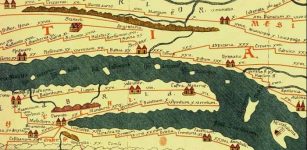 Tabula Peutingeriana: Huge Ancient Roman Map Created By Unknown Cartographer
Artifacts | Dec 14, 2018
Tabula Peutingeriana: Huge Ancient Roman Map Created By Unknown Cartographer
Artifacts | Dec 14, 2018 -
 What Is The Curse Of The Ninth Symphony?
Ancient History Facts | Aug 3, 2018
What Is The Curse Of The Ninth Symphony?
Ancient History Facts | Aug 3, 2018 -
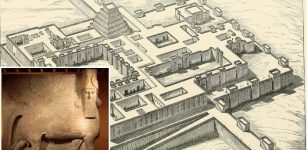 Magnetic Survey Finds Huge Previously Unknown Ancient Buildings In Abandoned Assyrian Capital Khorsabad
Archaeology | Dec 20, 2024
Magnetic Survey Finds Huge Previously Unknown Ancient Buildings In Abandoned Assyrian Capital Khorsabad
Archaeology | Dec 20, 2024 -
 Highly Sophisticated Underground City Of Derinkuyu – Who Were The Master Builders?
Featured Stories | Jul 22, 2014
Highly Sophisticated Underground City Of Derinkuyu – Who Were The Master Builders?
Featured Stories | Jul 22, 2014 -
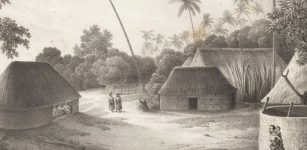 Impact Of European Contact With Pacific Islands Was Devastating – New Study Reveals
Archaeology | Sep 30, 2022
Impact Of European Contact With Pacific Islands Was Devastating – New Study Reveals
Archaeology | Sep 30, 2022 -
 Why Is A Biscuit Named After Giuseppe Garibaldi – Italy’s Military Leader And Hero?
Ancient History Facts | Feb 19, 2017
Why Is A Biscuit Named After Giuseppe Garibaldi – Italy’s Military Leader And Hero?
Ancient History Facts | Feb 19, 2017 -
 Neanderthals Vanishing When Homo Sapiens Emerged In Europe Was Coincidental – Are Herbivores The Answer?
Evolution | Sep 29, 2023
Neanderthals Vanishing When Homo Sapiens Emerged In Europe Was Coincidental – Are Herbivores The Answer?
Evolution | Sep 29, 2023 -
 Medieval Magic – A Service Industry Used By Rich And Poor Alike
Featured Stories | Oct 29, 2019
Medieval Magic – A Service Industry Used By Rich And Poor Alike
Featured Stories | Oct 29, 2019 -
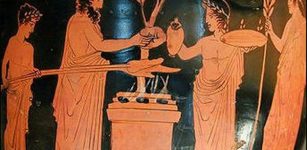 What Was The Role Of The Priests And Priestesses In Ancient Greece?
Ancient History Facts | Jul 27, 2016
What Was The Role Of The Priests And Priestesses In Ancient Greece?
Ancient History Facts | Jul 27, 2016 -
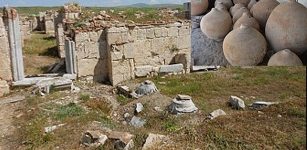 Byzantine Granary With 11 Pithoi Found In Byzantine City Of Amorium In Central Turkey
Archaeology | Aug 5, 2020
Byzantine Granary With 11 Pithoi Found In Byzantine City Of Amorium In Central Turkey
Archaeology | Aug 5, 2020

